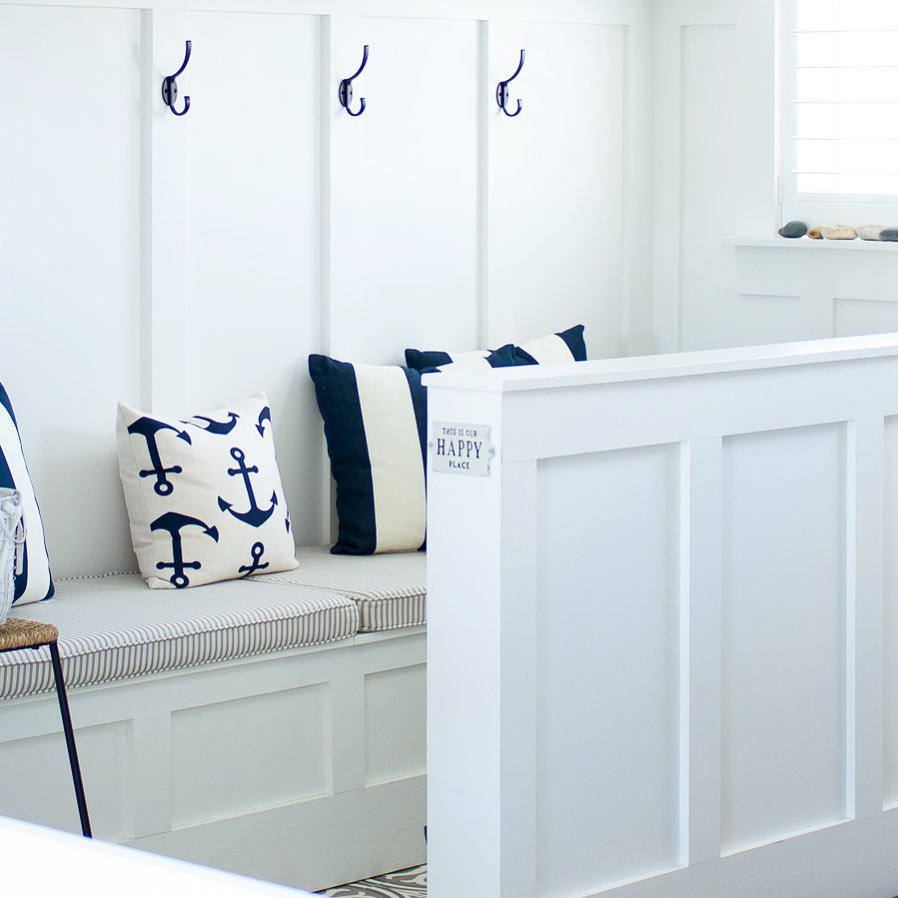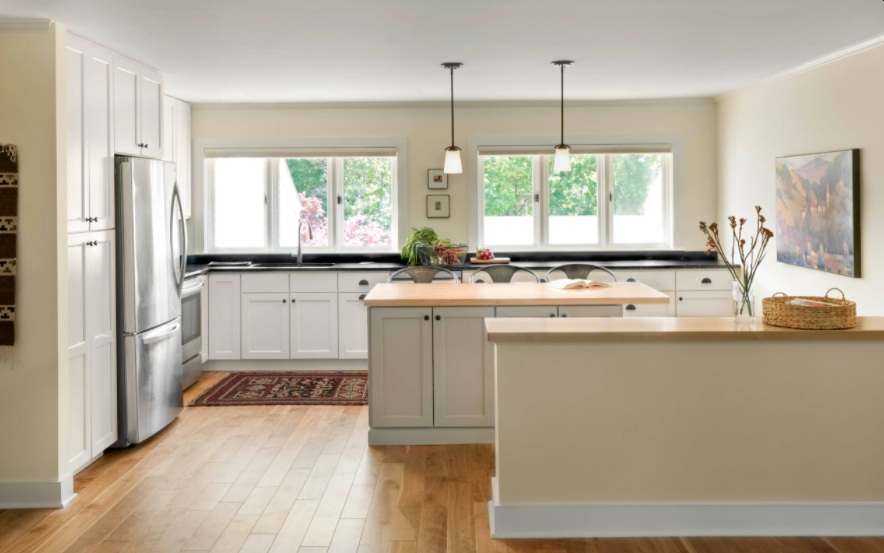A knee wall and pony wall are not the same although both terms are often used to describe the same thing. The difference between a knee wall and a pony wall is how each wall functions.

A pony wall is also known as a half wall, stem wall, short wall, or cripple wall. Pony walls are about interior design as they are not full-height walls and are often used as room dividers. However, a knee wall is often used for attic structural support, as one example.
Here, we’ll look at the differences between a pony wall and knee wall and what makes them unique. We’ll also reveal where the term pony wall came from. After, we’ll show you how to build a pony wall and a knee wall.
What Is A Pony Wall?

You might be wondering why half walls are called pony walls. The term pony wall gets its name from how it was first used – for taking care of ponies. The original pony walls served as stable walls that prevented ponies from escaping.
Look at it like this, a pony wall, or short wall, doesn’t extend all the way to the ceiling unlike regular walls. Or even better, think of pony walls as short walls, like in the photo above.

You’ll notice how the top of a pony wall serves as a storage space and counter. A short wall is often used as a room divider, just like full height walls.
Pony walls are non structural walls often used to separate spaces. A pony wall is for when you want an open floor plan. The short walls divide rooms, create extra shelving, and offer ways to redesign living spaces.
The Brief History Of Pony Walls
Pony walls are back. The non structural walls are less common today than they were in the 70s. Whether used as a partition between rooms, a safety wall, or as extra storage, pony walls offer a variety of solutions.
The pony wall also referred to as a “cripple wall,” was invented in the late 19th century by Walter Clydell, a farmer in Nebraska. Clydell wanted short walls in his horse stable so it would be easier for him to see into the stalls. However, it wasn’t until the 1960s that pony walls became popular in US households.
What Is A Knee Wall?

You can install knee walls to support roof rafters and attach them to the bottom plate of a structure. You can also create a cubby space behind a knee wall, the same way you would a reading nook or in an attic with a ceiling. Unlike pony walls, they’re not versatile.
The term knee wall is derived from how the wall is less than 3 feet tall. Unlike regular walls, a knee wall is shorter than knee height and supports weight.
Differences Between A Knee Wall And A Pony Wall

Often, people confuse a knee wall with a half wall mainly because both are short and unlike regular walls. A half-wall is more versatile than a knee wall.
A knee wall is a load-bearing wall, while the other wall serves an interior design feature that separates spaces or serves as room dividers. Many pony walls can be found in bathrooms, like in the photo above. The half walls offer private protection, leaving you with open views.
Where To Use A Pony Wall

Pony walls are versatile and are often used in bathrooms, kitchens, and living rooms. They can divide rooms without closing off space. Here are a few awesome DIY ideas to inspire your pony wall project.
Pony Wall Bookshelf
You can turn a pony wall into a bookshelf in two ways. Leave the top open and make the actual wall a shelf by leaving slots out. Pony walls make great mini-shelves, and depending on how long or thick they are will determine how many books they can hold.
Shower Or Toilet Divider

If you add pony walls next to a toilet or other wall, you’ll feel protected. If you add one to a shower, you can add glass above it for a unique look. Pony walls are common in bathrooms, creating an end for a vanity, or enclosing a soaking tub. Because these pony walls are tiled, waterproofing is important.
Entryway Support

Install a pony wall next to your front door. When visitors enter, it will give them something to lean on. Mudrooms are coming back and they are something to consider if you have space. Find out more about mudrooms with this mudroom guide.
Pony Wall Reading Nook
Pony walls make really cool and comfortable reading nooks. You can install a short wall in then add a bench on one side to create an adorable reading nook. Add shelving above it for books or add them on either side of the pony wall. Remember, you can install a pony wall wherever you please.
Kitchen Breakfast Bar

This is how half walls were often used in the beginning. Installing a pony wall between the dining room and kitchen gives you extra workspace, a bar for your plates, and a divider for each room.
Among traditional kitchen designs, the half wall offers a neater view, allowing you to see your dining area. For some people, a neater view is the biggest priority in a dining area.
Children’s Area
Because pony walls are short, they’re ideal for kids. You can use them to divide sibling rooms or create a play area in your living room or bedroom.
Where To Use A Knee Wall

A knee wall offers support like any load-bearing wall. The walls aren’t for decoration, although they can provide a vertical backdrop in the upper levels of a home.
Because half walls are non-structural walls, they serve many purposes, knee walls only have one. Also, a knee wall shouldn’t be confused with a sleeper wall or a retaining wall.
How To Build A Knee Wall in 5 Easy Steps

A knee wall should be built over another load-bearing wall.
- First, measure your space. You want a 2×4 running all the way across your floor. So, measure that space, including the height of the space from floor to ceiling where you are placing the knee wall. Mark the spot on the floor and ceiling.
- There are a couple of ways to find the angle of your rafters. You can use a square, which is quite easy. Or, you can create a template with a small 2×4 that you mark with the rafter and then cut.
- Cut the boards where you marked them. You can build a wall first and then put it up. Start with the bottom board and mark every 16-inches. Do the same for the top board.
- After you’ve cut and marked, screw the boards in. Make sure you keep the boards straight and have the vertical boards face the same way.
- After the wall is complete, install it. Screw the wall to the floor and ceiling. Last, put drywall or paneling over it. Remember, with an attic knee wall, floor joists run perpendicular to the wall. This means the floor joists run below the floor of the living space. As insulation does not stop airflow, cold air can pass under your floor as hot air in the summer.
How To Build A Pony Wall in 5 Easy Steps

- The most important part is the length. Your half wall design can extend across a room or partially. Or, you can make two walls with a space between them or an adjoining wall.
You want to frame your pony wall so the studs line up with the floor joists below them. If the half wall extends from a foundation wall, the studs should be placed to fall below where the floor joists above will be. - Cut your vertical boards the same length. Next, cut the top and bottom board the same length.
- Mark the top and bottom boards and connect the vertical boards with screws.
- Placing a pony wall isn’t difficult. Put it against at least one wall and attach it. Mark the entire floor so it will remain straight. Put it on the line and screw it to the floor.
- Screw the pony wall into the main wall. Then, the other support positions. If it goes all the way across a floor, screw it into both walls.
Frequently Asked Questions (FAQ)FAQ
How To Decorate A Half Wall?
The beautiful thing about half walls is they can be used as storage spaces or as a privacy wall in bathrooms. The space above a pony wall can function as a shelf. You can use the top of the pony wall to display photos or as a bookshelf. The walls are ideal for when you want to separate spaces.
What Is Knee Wall Insulation?
Knee walls have R-13 fiberglass rolls, called batts. The rolls contain stapled reflective insulation. The material seals the fiberglass batts. Attic knee wall insulation is common because it can hold heavy weight.
How To Make A Pony Wall Sturdy?
Pony walls are not responsible for a vertical structural load, but this doesn’t mean they don’t need to be strong. You don’t want a pony wall that will move if and when someone leans on it.
There are a few methods you can use to reinforce a pony wall. Add a half-inch plywood board to the wall for added support. The threaded rod method involves inserting upside down joist hangers into the framing. The result will add tension strength to the blocking.
How High Is A Pony Wall?
Half the walls are between three and four feet. When building or remodeling, have them frame the wall 42 inches and see how you like it. Because the walls are short, they will help you maintain an open floor plan as the walls do not extend all the way to the ceiling.
How Do You Remove Knee Walls?
Knee walls are often installed wrong and do not have a floor to the top plate. When removing a knee wall, remember, they are load-bearing walls. In this situation, do not remove the walls.
Differences Between A Pony Wall And Knee Wall Conclusion
Pony walls and knee walls can improve your home. Now that you know how to build them, create a plan and do it right.
Many inexperienced DIY homeowners install knee wall insulation incorrectly. When this happens, unwanted air travels under the floor and will create an unpleasant indoor atmosphere. You don’t want this to happen, so before you begin, reach out to a local contractor and consult with them first.
Pony walls, on the other hand, a bit easier to instill. If you have DIY skills, you shouldn’t have a problem adding them to your home.
The post Difference Between A Knee Wall And Pony Wall appeared first on Home Decorating Trends - Homedit.
0 Commentaires